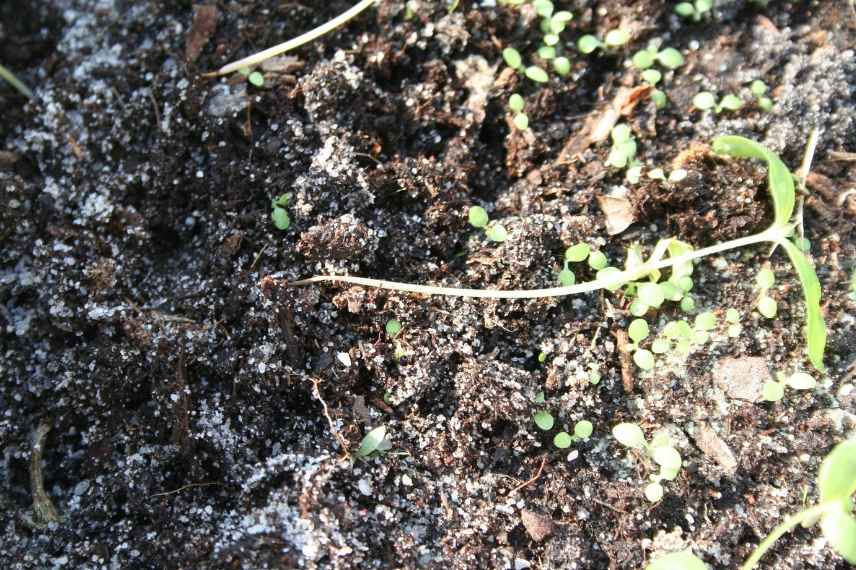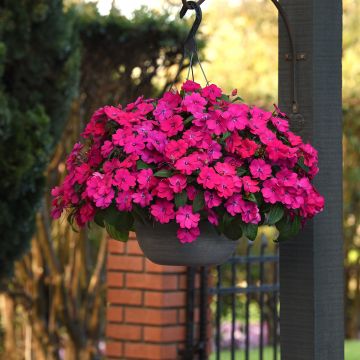
Damping off in sowing: understanding, combating, preventing
Tips and tricks
Contents
Sowing seeds is an economical way to obtain many plants to flower our gardens. But this operation, simple though it may be, can turn into a nightmare if certain precautions are not taken.
Damping-off during sowing is one of the most common problems you may encounter.
But what is meant by damping-off during sowing? What causes it? How can it be prevented?
Discover our tips to prevent your efforts from being wasted!
Identifying damping-off in sowings
Damping-off in sowing can take two forms :
- sowing has not germinated and no seedling appears.
- small leaves have appeared then their stems become thin, especially at their base, sometimes taking on a brownish tinge before collapsing and dying.

Read also
Sow in warmth or on a hotbedDamping-off in sowings: many culprits
The term «damping-off in sowing» denotes the same problem caused by different cryptogamic diseases, including fungi with increasingly barbarous names such as: Pythium, Phytophthora, Botrytis, Rhizoctonia, Fusarium…
Discover other Flower seeds
View all →Available in 1 sizes
Available in 1 sizes
Available in 1 sizes
Available in 1 sizes
Available in 1 sizes
Available in 1 sizes
Available in 1 sizes
Available in 1 sizes
Available in 1 sizes
Available in 1 sizes
Factors favouring damping-off in sowings
If all these fungi are present in nature, certain conditions favour their development and endanger your sowing:
- unsuitable substrate
- excessive moisture in the culture medium (potting compost, ambient air)
- poor-quality seeds
- infected equipment (pots, trays… but also your hands!)
- seeds sown at wrong depth or too densely,
- temperatures that are too low
Preventing and treating damping-off in sowings
Bad news: no effective curative method exists against damping-off of sowings. Once fungus takes hold, only option is to start again (with new potting compost). Risk greater when sowing in a seed tray because neighbouring plants can be infected very quickly.
The only option is a preventive approach. By taking a few simple precautions, sowings then develop under optimal conditions and produce beautiful plants that brighten borders and window boxes for years.
Here are 10 tips and tricks to avoid damping-off of sowings :
- Choose an appropriate potting compost, labelled ‘special sowing’. It is light, well-draining and not very rich, because seeds do not need significant nutrients to germinate. It also contains no coarse lumps that hinder root development. If necessary, feel free to add perlite or vermiculite which ensure good aeration of substrate.
- Never use garden soil, not even homemade compost! These can harbour microbes ready to develop.
- Buy good-quality seeds. If using your own seeds and worried they may carry pathogens, soak them a few minutes in water at 50°C. This technique can however be impractical for very fine seeds.
- Use clean, disinfected equipment. If not using new containers (pots, trays, seedling modules), disinfect them by scrubbing with warm water mixed with 10% bleach. Rinse thoroughly. Wash hands too, especially after gardening or handling tools.
- Sow at correct depth. While some seeds need to be covered by a few centimetres of compost, others germinate almost on the surface. Read instructions on packets carefully!
- Thin out. The denser the sowings, the higher the risk. As soon as first seedlings appear, gently remove some so spacing between each plant is sufficient.
- Place sowings in a warm room (but not hot) where temperature does not fluctuate too much. Although some have particular requirements, seeds generally germinate between 15°C and 20°C.
- Ventilate. A confined environment favours development of fungal diseases. Remember to open greenhouse or lift covers if sowing under cover, at least a few hours a day.
- Water moderately. While seeds need moisture to germinate, a waterlogged substrate is ideal for many fungi! Avoid watering from a watering can. Opt for regular light misting that keeps top centimetres moist but not saturated. Take care not to let compost dry out.
- Sprinkle charcoal on surface of compost for its antifungal action. Warning! Do not use barbecue charcoal which may have been treated. Collect charcoal from fireplace. To reduce to powder, use a pestle or a grater. Alternatively, place charcoal in a cloth and crush with a heavy object. No need to use much — a fine dusting is enough!
- Subscribe!
- Contents










































Comments